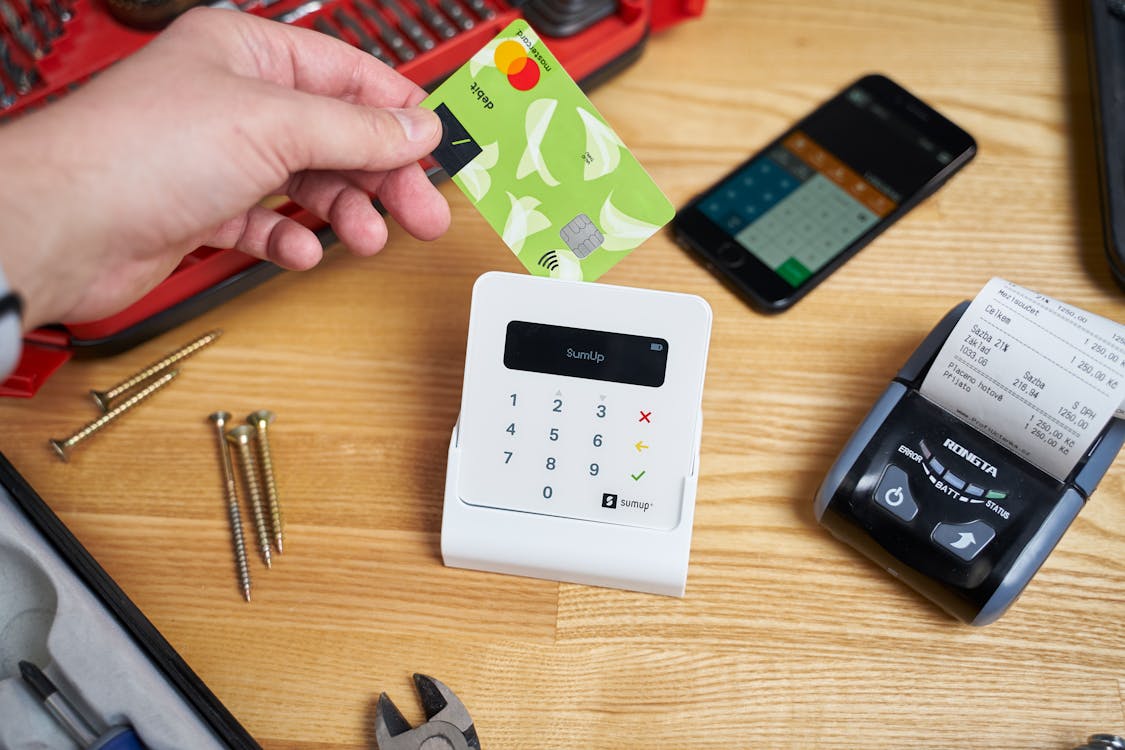Organizational ManagementOrganizational Strategy
Common Cases of Employee Theft from Employer and How to Handle Them

Employee theft refers to the stealing of property or another form of commodity belonging to an employer for their own personal use. Employee theft can occur when someone steals money or merchandise, but time theft and confidential data theft are just as significant.
An astonishing 95% of businesses have encountered cases of employee theft at one point. Employee theft is a major concern, as it contributes significantly to business failures. Small businesses are particularly affected by the implications of employee theft.
Fortunately, there are many widely-available tools and protocols to put in place that can effectively prevent employee theft and highlight the warning signs that an employee may be stealing from the business.
Types of Employee Theft
The first step to preventing internal theft in a business is understanding the various types of employee theft. The theft of office supplies and money from the cash register is the most obvious form of employee theft, but internal theft takes many other forms.
If businesses aren’t vigilant about their employees and security measures, they could suffer major losses. Now that it is common knowledge that the majority of employees steal from their employers at some point, businesses can’t afford to let such instances slip, or other employees might follow in their footsteps.
Here are the different types of employee theft that commonly occur in the workplace:
Inventory Theft
Statistics have proved that employees may be responsible for inventory shrinkage of up to 50%. If a business is in the industry of selling particular products, employees may find ways to steal the inventory in order to resell it or take it for personal use.
To prevent inventory theft, it is wise to put up cameras in the workplace. Theft may be sly and clever, but employees generally feel reluctant to take chances when they know someone may be watching their activities. At the very least, cameras might allow you to catch thieves in the act.
Another sound solution is to keep the inventory of high value locked up. However, this solution might be more reachable for a small business than a major enterprise with immense amounts of inventory.

Services Theft
Service businesses often generously offer employee discounts. Such discounts are given with such good intent, but some employees may take advantage of them and try to apply discounts on unauthorized services.
Data Theft
Data theft is arguably the most threatening type of employee theft, as it puts not only the business at risk but also its customers and other employees. Data theft refers to the case that an employee steals personal information, contact lists, customer data, credit card numbers, and other sensitive information.
Data theft puts company assets in a vulnerable position, and the ramifications of stolen information go far beyond employee theft itself. Employees and customers alike would be hesitant to trust the business in the future if it has been the target of data theft.
Money Theft
One of the more obvious types of employee theft, money theft, is a significant threat to retail organizations, in particular. Employees are responsible for managing the money in cash registers and are therefore presented with countless opportunities to steal from the business.
Another, more subtle, form of cash theft includes an employee taking money for the sale of a product without recording the sale in the system. An employee can also charge a customer more for a product and take the profit for their own personal gain.
Any business that deals with petty cash are at risk of cash theft.

Payroll Theft
Payroll theft can be described as a subset of data or cash theft and involves an employee stealing either information or money from the business’s payroll and financial records.
Payroll theft is primarily committed by employees with access to the payroll schemes of the business. Such employees include HR, finance, and payroll staff. Some employees go as far as altering another employee’s details so their payment is directed to their own personal accounts.
Time Theft
There are two common ways employees commit time theft. They can either enter falsified working hours into the organization’s system to make it seem like they worked longer hours than they actually did.
Another way to commit employee time theft is to use company time to participate in non-work-related activities. Although breaks are healthy in the workplace, and every employee should be allowed to converse with their co-workers, time theft occurs when employees spend excessive time on unrelated tasks.
Payroll fraud/theft is very similar to cash theft, but there are some distinct differences. While time theft occurs relatively often and is not an official crime in itself, it can be detrimental to the integrity of the organization’s payroll.
A business owner can not simply lessen an employee’s pay based on the suspicion that they are not working their full shift. Further action regarding time theft can only be taken following the discovery of definitive evidence that an employee does not dedicate working hours to work.

Why do Employees Steal from Businesses?
Employees steal for a variety of reasons and in a multitude of different ways. It is one thing to put measures in place that make it difficult or impossible for employee theft to occur, but understanding why it happens in the first place is essential.
Many employees steal because of the simple reason that they can. Other employee theft cases may be the result of resentment toward the employer or that employees feel like they have been wronged in some way. Employees might think they’re getting justice when they commit theft.
Most cases of employee theft results because employees simply want the organization’s money for their own financial gain to live an upgraded personal lifestyle. When the appropriate security measures and punishments aren’t enforced, certain employees may constantly be tempted to steal.
How Can a Business Prevent Employee Theft?
Deterrence is arguably the best way to prevent theft. Implementing workplace policies and procedures that discourage occupational fraud and theft is the best way to achieve this. Such policies must be noted in the employee handbook of the organization.
A sound employee theft policy will look something like this:
Company Policy on Employee Theft
This section of the employee handbook should contain a reminder of the legal implications of theft. It must include specific examples of employee theft in its various forms, including inventory theft, data theft, time theft, cash theft, etc.
This section should be created based on the industry of your organization and refer to typical methods of employee theft in the specific industry. For example, the hospitality industry may include extensive examples of the theft of food, drinks, and clocked hours.
The consequences of Employee Theft
This section of the company policy must clarify the disciplinary actions that will be taken in the case of employee theft. It should include clear statements of the repercussions of theft.
The Investigation of Theft
In this section, thoroughly explain the measures you have put in place to detect theft, should it occur, and how you will follow up with all cases of detected theft. Also mention the disciplinary action you will take should someone be falsely accused of employee theft.

Put an Employee Policy Reporting System in Place
After implementing the employee policy, you must create a reporting system as well. A good policy reporting system will allow employees to report cases of employee theft anonymously and confidentially.
Such a reporting system must also allow employees to report cases of customer theft and offer several ways to report theft, such as by phone, email, and dropbox. Employees must be properly trained on the reporting system to feel comfortable taking action when they witness employee dishonesty or customer theft.
Train Managers to Monitor Effectively
As managers are the ones to create the schedules of their employees, they are in the best position to monitor irregularities. This will discourage time theft among employees.
Many managers take their responsibilities very seriously, while others may be more inclined to sign off on an employee’s timesheet without diligently verifying their hours beforehand. Every manager must, therefore, be trained thoroughly to ensure they know how to effectively review every employee’s timesheet before paying them.
If a manager is able to detect time theft before the payroll is run, they have the chance to speak to the employee about the matter and identify whether it was accidental or intentional. Thus, internal controls are a cornerstone of preventing employee theft.
Discourage Theft With Company Policies
You can effectively prevent theft in the organization by implementing policies that make theft very undesirable.
To prevent payroll theft and other forms of theft, assign two employees to certain job tasks to make theft less likely. When more than one employee is involved in counting cash from the cash register or restocking the inventory, for example, they will be less inclined to take chances because they risk getting caught.
You can segregate responsibilities to prevent theft, as employees will be aware of the fact that a check and balance system is in place. For example, once one employee has written checks or handled money, have another employee review their activities to check if their co-worker has done everything according to company policy.
Implementing strict punishments is another way to discourage theft in the workplace, but punishments can also encourage employees to be more clever about the way they steal. Therefore, be wary when implementing punishments as they may bring the opposite of your desired effect.
Instead, make stealing undesirable by eliminating the need to commit fraud. You can do this by offering competitive salaries and ensuring optimal employee morale by promoting ethical behavior. For instance, if you give your employees a reasonable amount of merchandise for free or as a gift, they will be less likely to steal inventory.
Hire Attentively
Being more careful about who you hire is an effective way of preventing theft. Before considering a new applicant for a position, conduct reference and background checks to identify which applicants may be more inclined to steal from your organization.
Some warning signs to look out for during the hiring process include an unwillingness to clarify issues that came up during the background check and dishonesty on a resume. It may be helpful to speak to the applicant’s former managers and employers to get a better sense of the person’s character.
For positions that require an employee to handle money, consider asking the applicant to submit a credit check. Adjusting your hiring standards to a high level will reduce the likelihood of dishonest employees entering your workforce.
Implement Sound Security Measures
Having adequate security and tracking measures in place can go a long way in preventing and detecting employee theft. Security cameras and computer monitors will keep employees on their feet and remind them that they can’t get away with anything.
Regular cash controls and financial audits will also help identify cases of theft and prevent it from happening again. If there are any security vulnerabilities in your organization, employees are bound to find out about them and potentially take advantage of the situation.

How to Respond to Internal Theft
If your efforts to prevent theft in your organization have proven unsuccessful and you find out employees have been stealing from the business, it is crucial to handle the situation appropriately.
When you handle a case of employee theft right, it will prevent the same employee and potentially other employees from committing theft again. Therefore, having unyielding implications in place is essential for ensuring employee theft doesn’t occur.
Employees must understand that stealing is not only a viable cause for firing, but it is also illegal, and the consequences of theft are severe and can lead to criminal charges.
Gather Evidence
Regardless of whether or not you want to involve the police in a case of employee theft, you must always ensure you have ample evidence of the crime before making any accusations. You must be able to prove definitively that an employee is guilty of theft before confronting them.
Fire the Employee
Many disputes and workplace issues are easy to resolve with a mere warning or a write-up. Terminating an employee is generally only deemed the last resort after other disciplinary actions have been executed.
However, employee theft is not an infarction that should be handled in any other way other than termination. If an employee steals and you respond with lenience, other employees might be encouraged to do the same, as they know the consequences are not devastating.
Therefore, employees that steal from an organization must be terminated with immediate effect to ensure other employees realize the severity of the situation. An employee who would steal from your business is not someone you want on your payroll.
Involve the Police
Theft in any shape and size is a crime. A police report may be beneficial if the organization has insurance that covers internal theft. With the appropriate evidence in the form of a police report, the insurance company will have to accept your claim and pay for the damages.

Conclusion
Employee theft is a widespread issue that affects the majority of businesses, but small businesses are particularly susceptible to the devastating effects of occupational fraud. In a recent study by the Association of Certified Fraud Examiners, it was found that small businesses with under 100 employees had a median loss of 50% higher due to employee theft than larger organizations.
The duration that the theft was ongoing was also significantly longer than in large businesses. The primary reason for this is that small business owners often trust their employees more because they feel like they have a personal relationship with them. Although trust in an organization is essential, one should never underestimate what employees are capable of given the opportunity.
Employee theft is detrimental not only to organizational finances but also to employee morale, company culture, and the organization’s relationships with customers and partners.










